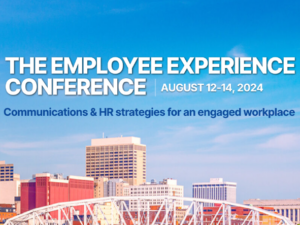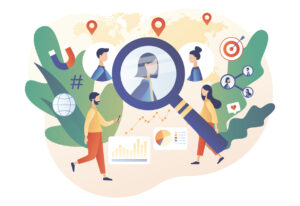4 employee engagement tips from Volvo, Microsoft, NRMA and more
Check out how organizations across industries are reaching members of their workforce with information, leadership connections and more—all without a big budget.

Employees are the lifeblood of every organization.
That means engaging them is more than just a line on internal communicators’ to-do lists. Rather, it’s a crucial part of organizations’ success—both internally and externally.
Consider these four lessons from organizations using Yammer to better support their employees:
1. NRMA: Build without a budget.
The NRMA—the trusted roadside organization of more than 2.4 million members in Australia—knew they had to empower their employees and foster a thriving company culture. However, their budget was paltry: They had a whopping $0 to work with.
“Increased connection, easier sharing of information, faster problem solving, empowering the frontline—these needs read like a shopping list of why you would use an Enterprise Social Network,” Pete Johns, digital employee experience manager for NRMA, said in a blog post.
So, Johns and his colleagues turned to Yammer and created three new community groups, each with an assigned community leader and a community administrator. Using a survey and Swoop Analytics, they measured interactions—and found that overall engagement increased 8% within three months. More importantly, NRMA’s employees said they felt better about coming to work, and felt more connected to the organization and its mission.
Create your own success with Yammer by following the steps in its campaign playbook, which contains ideas for rolling out product launches, problem-solving activities, crowdsourcing support, connecting leaders to employees and more.
You don’t have to reinvent the wheel, either. Instead, lean on your passionate employees and use content that has already been created. Find champions and get creative,” says Angus Florance, senior product marketing manager for Yammer at Microsoft. “Listen to what’s already happening and start there.”
2. Spinnaker Software: Showcase your metrics.
The South African software company has employees in eight offices throughout three countries—and many employees were working remotely before COVID-19 pushed many workforces to remote and hybrid models.
It turned to Yammer to connect its employees and encourage engagement—something that quickly showed results, according to Helen Behm, human resources lead for Spinnaker.
“This can be seen in our stats from Yammer that have seen a 281% increase in the number of posts, 204% increase in the number that have been read, and 310% increase in engagement,” Behm shared in a blog post.
You too can have an employee engagement success story through Yammer by getting leaders involved and invested from the start.
“Start small, but involve the right stakeholders to get buy-in at all levels,” Florance says. “Involve leaders as soon as you can, and show how Yammer can help with their existing goals and objectives.”
Florance also advises using several methods and channels to get the word out about Yammer communities—just as you would for other internal campaigns and efforts.
Don’t forget to measure and report your metrics with each campaign. Along with showcasing your ROI, insights gathered from engagement numbers and employee sentiment can reveal important behavior changes with your employees, along with what’s important to them and what they seek.
“Yammer has insights for each community, but beyond the numbers, it all goes back to basics,” says Florance. “Ask yourself: What’s important? Why is the community there in the first place? Who needs to know? Build a scorecard that helps support your community, share successes and spotlight great stories to accompany your analytics and measurement.”
3. Volvo and Microsoft: Empower workers with information equity.
Volvo is working to create a new corporate culture “where employee equity is key to staying competitive.” To even the playing field, the vehicle manufacturer is focusing on dispersing information quickly and in a way that enables collaboration in real-time, casting aside lengthy approval processes to integrate opportunities for innovation.
Jens Gustafsson, senior vice president of corporate communication at Volvo Group, told Microsoft:
When employees feel valued, they are more productive and engaged, which in turn helps the company develop new business models that focus on services and connected solutions. We onboarded our Firstline Workers into the same Microsoft 365 ecosystem used by information workers and they can access everything via their smartphones. It’s about democratizing the workplace: everyone is equally important, and we all deserve the same information and the same visibility.
Along with empowering employees with information, Yammer can also be used to help members of your workforce navigate uncertain times.
For Rose Nyameke, a data and applied scientist at Microsoft, the organization’s U.S. immigration Yammer community helped her stay up to date with crucial immigration policies and changes while cutting out the confusion of misinformation or politicized discord.
Microsoft shared Nyameke’s story in a blog post, which reads, in part:
While waiting for the official news on Presidential Proclamation 10052, which restricted certain people with an H, L, or J visa from entering or returning to the US, Nyameke recalls feeling emotionally exhausted trying to separate the signal from the noise. She decided to uninstall the news and social media applications on her phone.
“I waited for [Jack Chen, associate general counsel in CELA] and his team to post about the impact of the executive order,” Nyameke says. “The Yammer community was my first source of information.”
You won’t have all the answers in our rapidly changing landscape, and you don’t have to. Rather, share the information you do have and repeat messages from managers, executives and other leaders that they’re there for employees to guide and support them.
4. NI (National Instruments): Help employees adjust to remote workplaces.
The NI global communications team encouraged its executives to interact more often and openly with employees—crucial work during the multitude of workforce changes this year. However, they didn’t stop there.
The team also created a community where employees could ask real-time questions about COVID-19, which encouraged the creation of a “Work from Anywhere” community, in which employees shared tips and tricks to better work remotely. Another community covering VPN instructions, questions and challenges was also created.
Each of these communities helped employees share ideas with one another as they adjusted to the changing landscape—and Yammer helped NI to provide a community resource with answers and assurance during a time of continuing uncertainty.
Follow in the organization’s footsteps and help assure your workforce by opening up the lines of two-way communications between your executives and employees. Microsoft’s Guide to Yammer can get you started.
This article is in partnership with Yammer. Learn more by joining Ragan’s Future of Communications Conference, Nov. 10-11, where Yammer is a sponsor.







